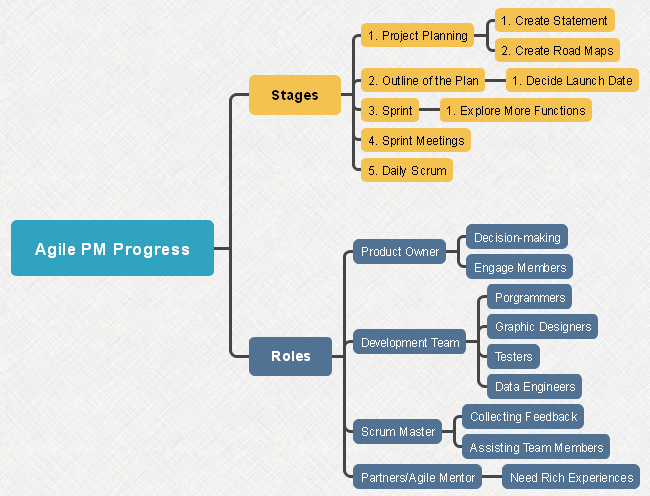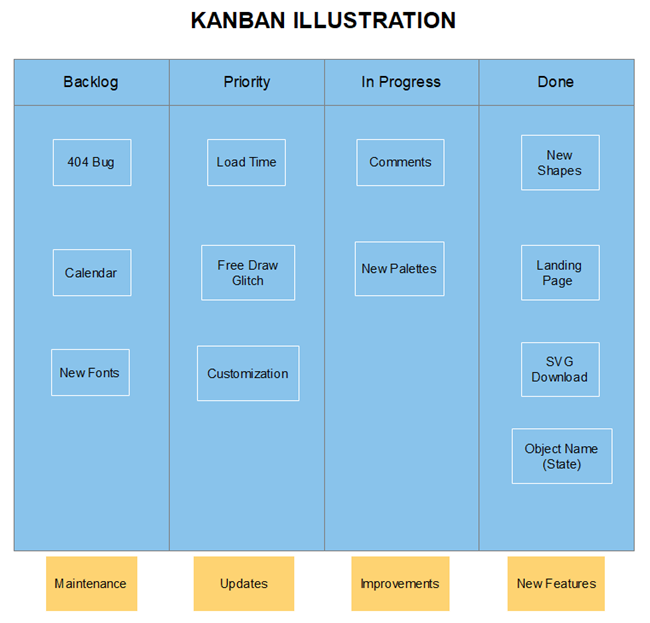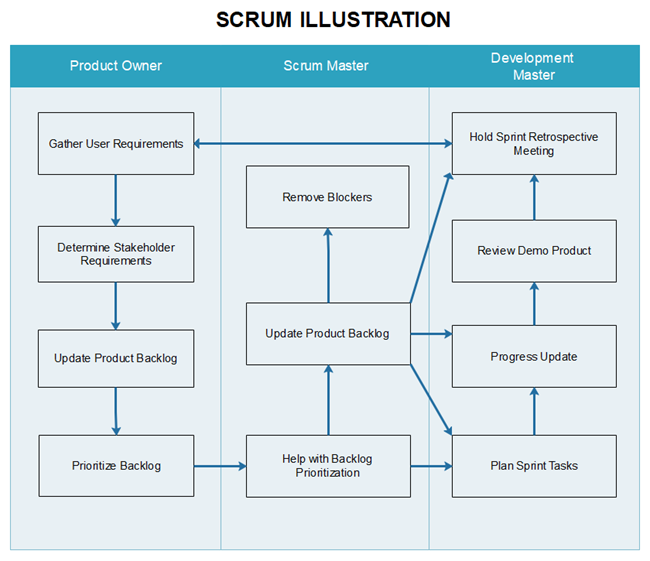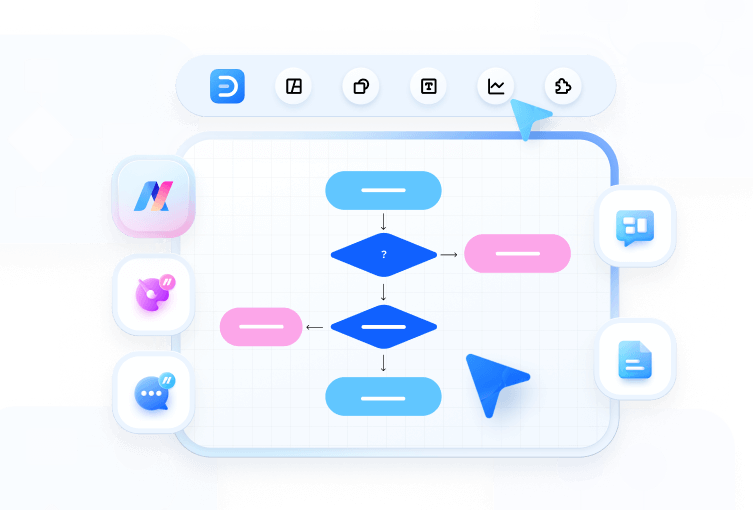Kanban VS Scrum: Difference and Complementation
Kanban and Scrum Methodologies
Kanban methodology is a means that is ideal for managing the development of products with the intention of continual delivery without pressuring the development team. It is aimed at assisting groups to work together effortlessly. In this methodology, work gets organized on the Kanban board.
Scrum methodology, on the other hand, is a perfectly-curated process for structuring your work. It is best known as the scrum process for taking care of how everything to be done on a project within 2-4 weeks.
Similarities between Kanban and Scrum
Whereas Scrum project management is good for giving your organization a boost in the project progress, Kanban project management is suitable for changing your project process over time without straining the development system. These two methodologies, however, have a couple of things in common. You can find out from the list below.
- Kanban process and Scrum process are lean and agile project management methodologies.
- In both methods, the Kanban board and Scrum board are used.
- The work is in three categories, i.e., work that is yet to start, work that is being done (In progress), and completed work.
- Both methodologies are based on self-organizing teams.
- Work is broken down into pieces.
- Transparency is upheld in both to enhance process improvement.
- Pull scheduling is the standard in these two methodologies.
Now that we have seen their similarities, what about their differences?
Differences between Kanban and Scrum
Kanban and Scrum are work systems that depend on process flows and focus on reducing waste, however, they differ from each other in some ways. Below is a detailed comparison.
- Team roles
- Work boards
- Scheduling
Teams in Scrum gets divided into Product Owner, Scrum Master, and Development Master. Each party is assigned to a set of tasks to ensure an orderly and efficient balance in the process. The Scrum team has to be cross-functional.
In Kanban, however, this is not the case. The team of specialists and generalists in the project work on the same Kanban board from different aspects. The cross-functionality is null and void in this case as the Kanban workflow is meant to be used by all project teams.
Scrum board and Kanban board differ in detail. Columns, on a Scrum board, reflect periods in the workflow, starting from the sprint backlog and ending in the finished tasks. The sprint is unsuccessful when there are no stories (those added to the board at the beginning of each sprint) in the final column at the end of that very sprint. Once over, the board will be cleared up and ready for an upcoming sprint.
On the other hand, on a Kanban board, the maximum number of stories allowed in each column at any time is published. It ensures limitations for each condition determined by the Kanban team. Also, the Kanban board doesn’t need resetting, because each column has a limited number of stories and no time boxes.
In the Scrum process, there’s a lot of detail on the schedule. Usually, the team is given a prioritized list that must be completed by delivering products. The team then determines how many points they can get in a single sprint. Throughout several sprints, the team learns, improves and optimizes estimates. This iterative process allows for precise estimations of workflow and successful management of several projects.
On a Kanban team, on the contrary, there are no time boxes or iterations. The progressive improvement is expected to achieve in the workflow. Limitations assigned to various conditions in the workflow will be adjusted early as the team keeps using Kanban until an optimal set of limits is attained to keep the flow stable and efficient.
Successful Cases of Using Kanban and Scrum
a) Kanban
A team that organizes educational events both internally and externally is well known for successfully finishing their work. They realized that no transparency would hinder the team members from conceiving the idea of the ‘big picture.’ So the leader prepared a short Kanban intro for the non-agile team and sought supervisor’s approval to make a Kanban board.
This how the team brought a Kanban system to life:

- They picked item types accordingly for different events.
- Next, they charted out the workflow as inbox (for the arrival of new events), briefing (when to have a meeting with the project stakeholders), prep (having to do the work in sub-columns of WIP), running and done (has feedback and debriefing of for various events).
- They chose the lockers of the team to create a Kanban board. Each locker represents a column. On the moment that all ongoing events were seen on the Kanban board by the team, they realized what was required and stopped here.
It was just two days later when the team learned the need for adding swim-lanes and considering tasks that were not event-related. The necessity of improving the delivery time of the group was also brought to light. Overall, the Kanban process was of immense assistance to the team.
b) Scrum
Due to competitiveness, the delivery of IT Services of Amir Arooni’s department needed robust upgrading. After carrying out a small project, it was realized that the existing Waterfall working methods and the organizational structures were no longer to meet the organization’s goals. Hence ING used the Scrum process to enhance agility.
Below is a rundown of how the firm implemented Scrum project management.
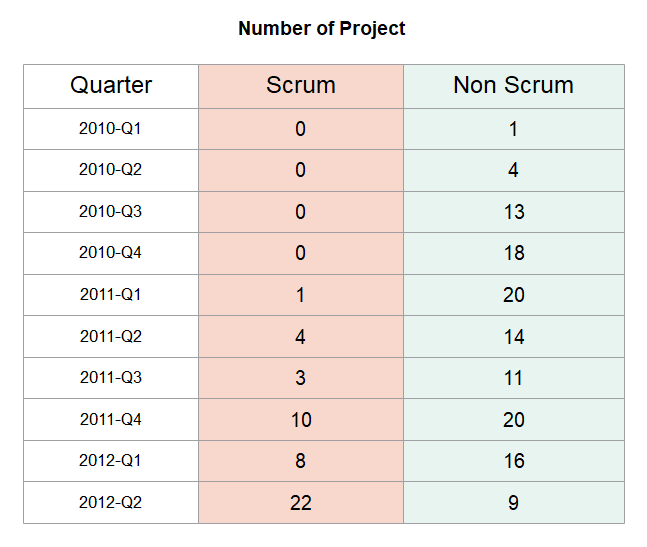
- Creation of Baseline. A small project of 1500 man-days was started to baseline the department’s performance.
- Urgency sense. Then, they identified a meaningful sense of urgency to create two times the value of the same Euro.
- Implementing Scrum process. It was a big and risky move in the organization since it was difficult to get a clear picture of the output using Scrum project management.
To improve output and have it ready as soon as possible, they had the first pilot Scrum project commenced in 2011. The time for these projects was a significant improvement from 3 to 6 months. Maintenance was also improved when the Scrum team carried out vital architectural tasks. There were also tremendous and positive changes in innovation, craftsmanship, collaboration, energy, and employee satisfaction. Trust were also enhanced in the organization thanks to communication infrastructure, facilities and team tools provided by Scrum development.
Are they complementary?
Yes! Some aspects of the Scrum process are complementary to a Kanban process. This is not new to some of you since you already put it to good use. They fit naturally and are an active part of the Kanban methodology.
Let us look at a case in which Scrum complementation is in play in a Kanban process below.
You can take, for instance, the aspects of Scrum that you do like and utilize them as ‘design patterns’ or ‘good practices.’ This doesn’t necessarily imply that you perform ‘Scrum,’ and you just make use of Scrum-related patterns. It is a slightly more advanced, experimental, and safe approach to carry out Kanban project management process. If you happen to use this approach, you often check to see if any of the other Scrum process patterns are not there and don’t think about adding them to your team process.
Don’t limit yourself in a particular project management software. Try different approaches to add Scrum to your Kanban process. Kanban is so flexible to work with that it lets you pick and choose patterns.
Summary
Hope this article has quenched your thirst for knowing about Kanban and Scrum. These two are easily confused and perceived as the same project management software due to their similarities. However, you must agree that they are separate entities.
Moreover, it is now clear that you can use these two processes interchangeably. Where Kanban methodology falls short of excellent delivery, you can easily employ Scrum process patterns to ensure perfect output. Please note that this is not using the Scrum process, but are borrowing the Scrum patterns to enhance the overall result of your Kanban process.
A bonus tip is that you don’t have to get it right for the first time. Scrum can provide you with detailed and prescriptive guidance, therefore you can try it and experiment it with adding activities.
